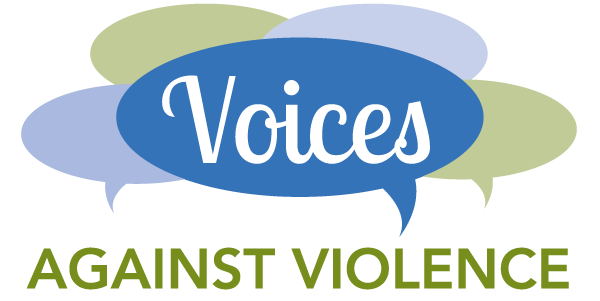What is sexual violence?
Sexual violence means that someone forces or manipulates someone else into unwanted sexual activity without their consent. Reasons someone might not consent include fear, age, illness, disability, and/or influence of alcohol or other drugs. Anyone can experience sexual violence, including: children, teens, adults, and elders. Those who sexually abuse can be acquaintances, family members, trusted individuals or strangers.
Forms of sexual violence
- Rape or sexual assault
- Child sexual assault and incest
- Intimate partner sexual assault
- Unwanted sexual contact/touching
- Sexual harassment
- Sexual exploitation
- Showing one’s genitals or naked body to other(s) without consent
- Masturbating in public
- Watching someone in a private act without their knowledge or permission
Facts about sexual violence
FACT: Chances are you know someone who has been sexually assaulted.
- Sexual violence affects people of all genders, ages, races, religions, incomes, abilities, professions, ethnicities, and sexual orientations. However, social inequalities can heighten the risk.
- At some time in their lives, 1 in 6 women have experienced an attempted or completed rape; more than half occurred before the woman was 18, and 22% before age 12 (Tjaden & Thoennes, 2000).
- During their lives, 1 in 33 men have experienced an attempted or completed rape; 75% occurred before the men were 18, and 48% before age 12 (Tjaden & Thoennes, 2000).
FACT: Survivors usually know their assaulter.
- People who sexually assault usually attack someone they know — a friend, classmate, neighbor, coworker, or relative.
- Of adults, 73% knew the attacker, 38% were friends of the attacker, 28% were an intimate partner of the attacker, and 7% were a relative of the attacker (Maston & Klaus, 2005).
- about 40% of sexual assaults take place in the survivor’s own home. Another 20% occur in the home of a friend, neighbor or relative (Greenfield, 1997).
FACT: Survivors are never at fault for a sexual assault.
- It doesn’t matter what someone is wearing or how they are acting, no one asks to be raped.
- People who sexually assault often use force, threat, or injury.
- An absence of injuries to the survivor does not indicate the survivor consented.
FACT: Rape is the least reported and convicted violent crime in the U.S.
There are many reasons why survivors may choose not to report to law enforcement or tell anyone about what happened to him/her. Some include:
- Concern for not being believed
- Fear of the attackers getting back at him/her
- Embarrassment or shame
- Fear of being blamed
- Pressure from others not to tell
- Distrust of law enforcement
- Belief that there is not enough evidence
- Desire to protect the attacker
Many survivors who do report a rape or sexual assault find that there is no arrest or conviction.
- Probability of arrest after a report is 50.8% (Reynolds, 1999) and the probability of a rapist being sent to prison is 16.3% (Reynolds, 1999).
FACT: Sexual violence is preventable.
By working with Voices Against Violence, you can:
- Model supportive relationships and behaviors with your friends and families
- Stand up for survivors and believe them
- Speak up when you hear harmful comments or witness violent acts
Legal definition of sexual assault in Vermont:
Sexual assault occurs when one person compels another to participate in a sexual act without consent, or with threats of coercion, or by threatening to harm another.
It is by definition sexual assault if “a person engages in a sexual act knowing the other person is mentally incapable of understanding or for any reason unaware of, the sexual act. Or, someone who is physically incapable of resisting or communicating an unwillingness to participate.”
This definition includes someone who is substantially impaired by alcohol, drugs, or under the influence of intoxicants unknowingly (predatory drugs, drinks laced with alcohol, etc).
Unless married, the age of consent in Vermont is 16. Therefore, engaging in a sexual act with a minor under the age of 16 is a crime. The only exception is if one person is less than 19 years old and the minor is at least 15 years old, and the contact is consensual, then it is not lawfully a crime.
References
National Sexual Violence Resource Center
Finkelhor, D., Hotaling, G., Lewis I.A., & Smith, C. (1990). Sexual abuse in a national survey of adult men and women: Prevalence, characteristics, and risk factors. Child Abuse & Neglect, 14, 19-28.
Greenfeld, L.A. (1996). Child Survivorizers: Violent offenders and their survivors. (NCJ 153258). Retrieved from Bureau of Justice Statistics: http://bjs.ojp.usdoj.gov/content/pub/pdf/CVVOATVX.PDF
Greenfeld, L.A. (1997). Sex offenses and offenders: An analysis of data on rape and sexual assault (NCJ 163392). Washington DC: U.S. Department of Justice.
Maston, C., & Klaus, P. (2005) Criminal Survivorization in the United States, 2003 statistical tables: National Crime Survivorization Survey (NCJ 207811). Retrieved from Bureau of Justice Statistics: http://bjs.ojp.usdoj.gov/content/pub/pdf/cvus03.pdf
Reynolds, M.O. (1999). Crime and punishment in America: 1999 (Report No. 229). Retrieved from National Center for Policy Analysis: http://www.ncpa.org/pdfs/st229.pdf
Tjaden, P. and Thoeness, N. (2000). Prevalence, Incidence and Consequences of Violence Against Women: finding from the National Violence Against Women Survey. Retrieved from http://www.ncjrs.gov/pdffiles1/nij/183781.pdf
Voices 24 Hour Hotline
Domestic Violence Hotline
Sexual Violence Hotline
